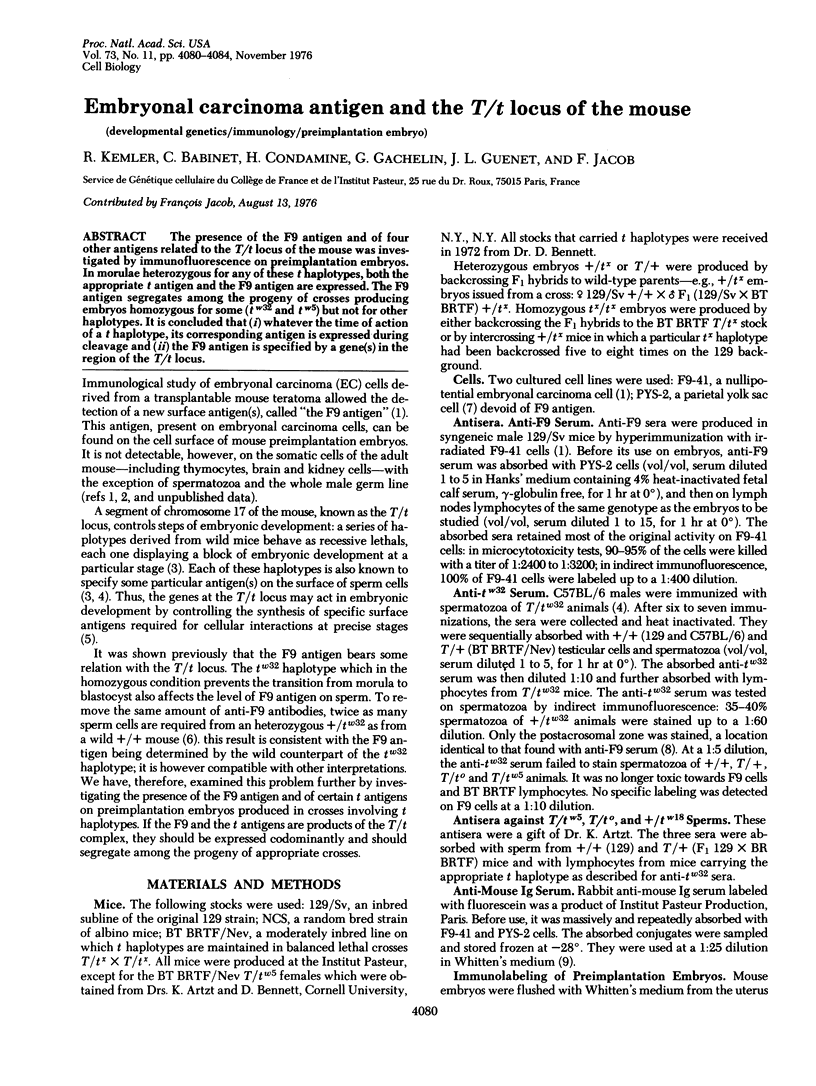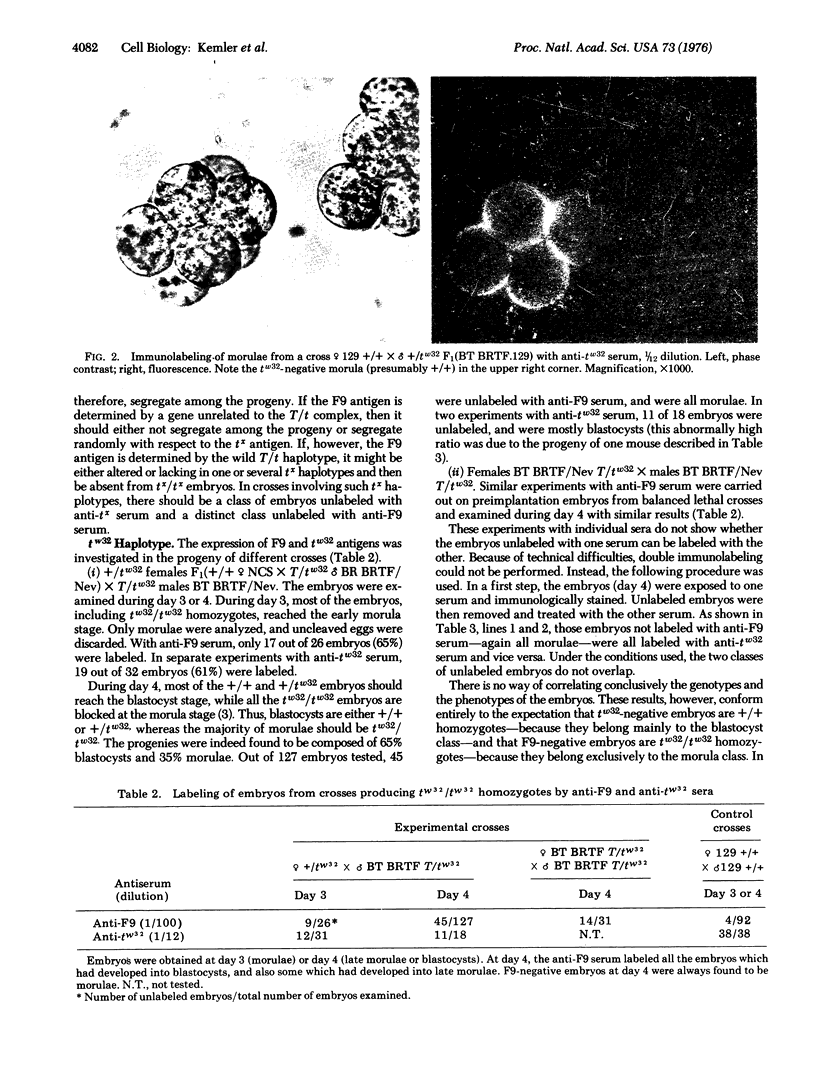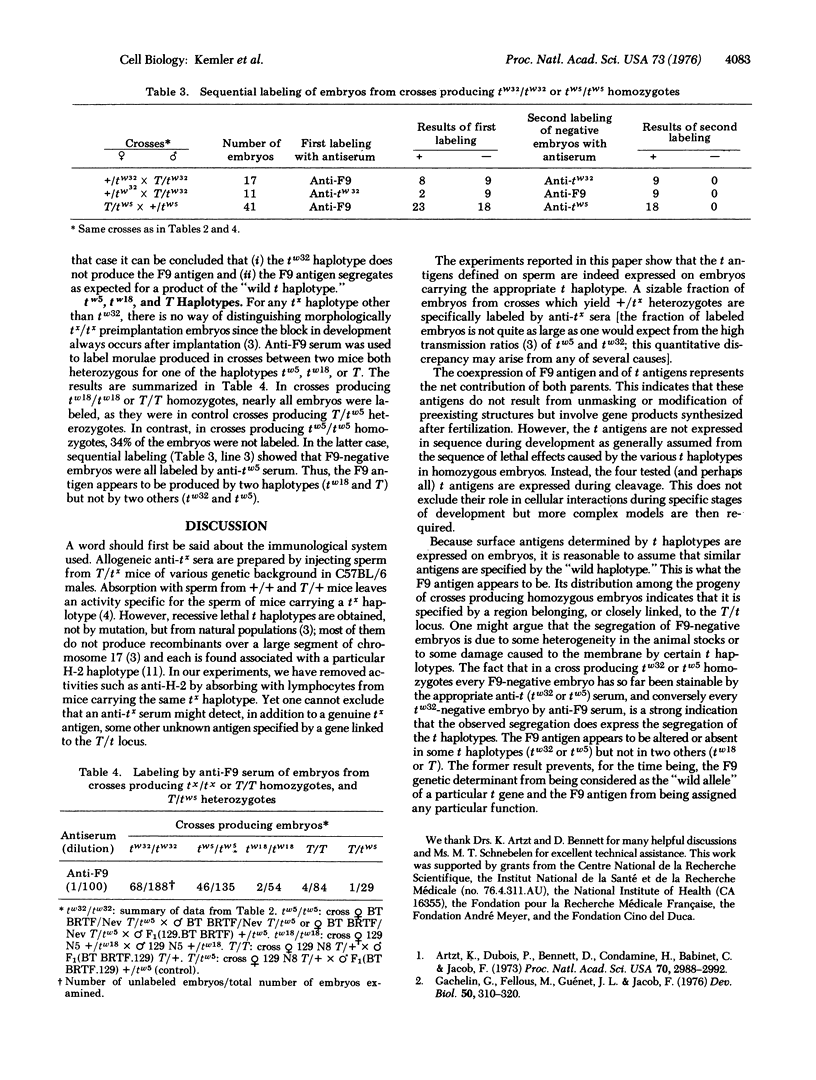Abstract
The presence of the F9 antigen and of four other antigens related to the T/t locus of the mouse was investigated by immunofluorescence on preimplantation embryos. In morulae heterozygous for any of these t haplotypes, both the appropriate t antigen and the F9 antigen are expressed. The F9 antigen segregates among the progeny of crosses producing embryos homozygous for some (tw32 and tw5) but not for other haplotypes. It is concluded that (i) whatever the time of action of a t haplotype, its corresponding antigen is expressed during cleavage and (ii) the F9 antigen is specified by a gene(s) in the region of the T/t locus.
Full text
PDF




Images in this article
Selected References
These references are in PubMed. This may not be the complete list of references from this article.
- Artzt K., Bennett D., Jacob F. Primitive teratocarcinoma cells express a differentiation antigen specified by a gene at the T-locus in the mouse. Proc Natl Acad Sci U S A. 1974 Mar;71(3):811–814. doi: 10.1073/pnas.71.3.811. [DOI] [PMC free article] [PubMed] [Google Scholar]
- Artzt K., Dubois P., Bennett D., Condamine H., Babinet C., Jacob F. Surface antigens common to mouse cleavage embryos and primitive teratocarcinoma cells in culture. Proc Natl Acad Sci U S A. 1973 Oct;70(10):2988–2992. doi: 10.1073/pnas.70.10.2988. [DOI] [PMC free article] [PubMed] [Google Scholar]
- Fellous M., Gachelin G., Buc-Caron M. H., Dubois P., Jacob F. Similar location of an early embryonic antigen on mouse and human spermatozoa. Dev Biol. 1974 Dec;41(2):331–337. doi: 10.1016/0012-1606(74)90310-8. [DOI] [PubMed] [Google Scholar]
- Gachelin G., Fellous M., Guenet J. L., Jacob F. Developmental expression of an early embryonic antigen common to mouse spermatozoa and cleavage embryos, and to human spermatozoa: its expression during spermatogenesis. Dev Biol. 1976 Jun;50(2):310–320. doi: 10.1016/0012-1606(76)90154-8. [DOI] [PubMed] [Google Scholar]
- Hammerberg C., Klein J. Linkage disequilibrium between H-2 and t complexes in chromosome 17 of the mouse. Nature. 1975 Nov 27;258(5533):296–299. doi: 10.1038/258296a0. [DOI] [PubMed] [Google Scholar]
- Lehman J. M., Speers W. C., Swartzendruber D. E., Pierce G. B. Neoplastic differentiation: characteristics of cell lines derived from a murine teratocarcinoma. J Cell Physiol. 1974 Aug;84(1):13–27. doi: 10.1002/jcp.1040840103. [DOI] [PubMed] [Google Scholar]
- Mintz B. Experimental Study of the Developing Mammalian Egg: Removal of the Zona Pellucida. Science. 1962 Nov 2;138(3540):594–595. doi: 10.1126/science.138.3540.594. [DOI] [PubMed] [Google Scholar]
- Whitten W. K., Biggers J. D. Complete development in vitro of the pre-implantation stages of the mouse in a simple chemically defined medium. J Reprod Fertil. 1968 Nov;17(2):399–401. doi: 10.1530/jrf.0.0170399. [DOI] [PubMed] [Google Scholar]




